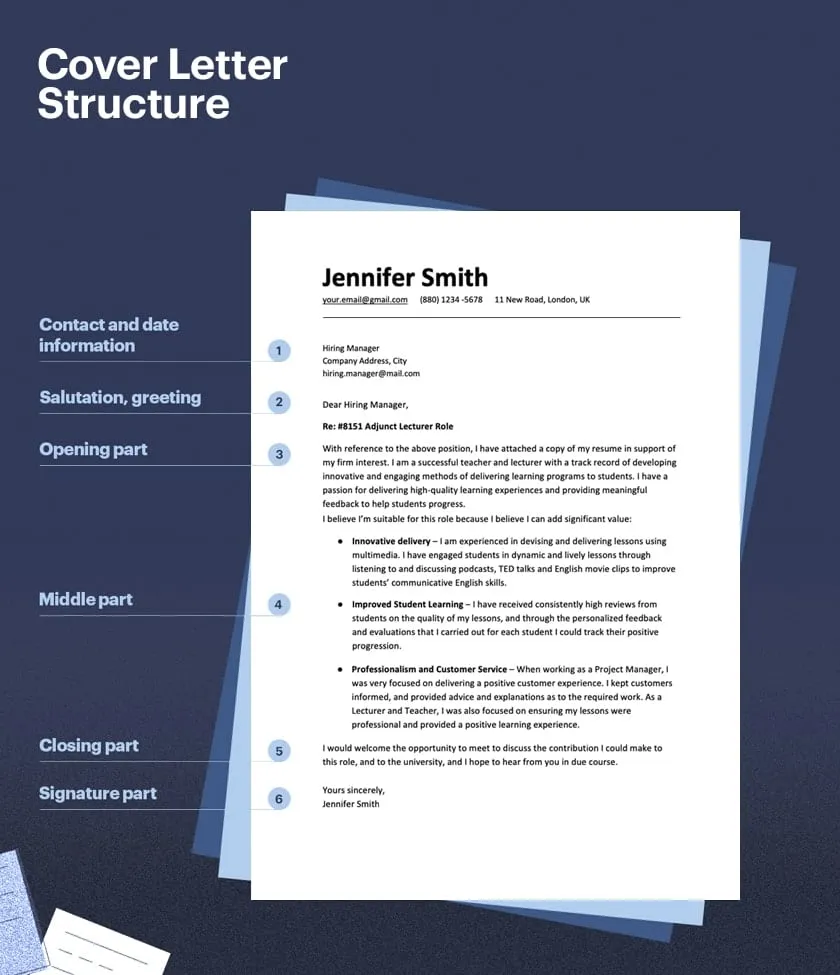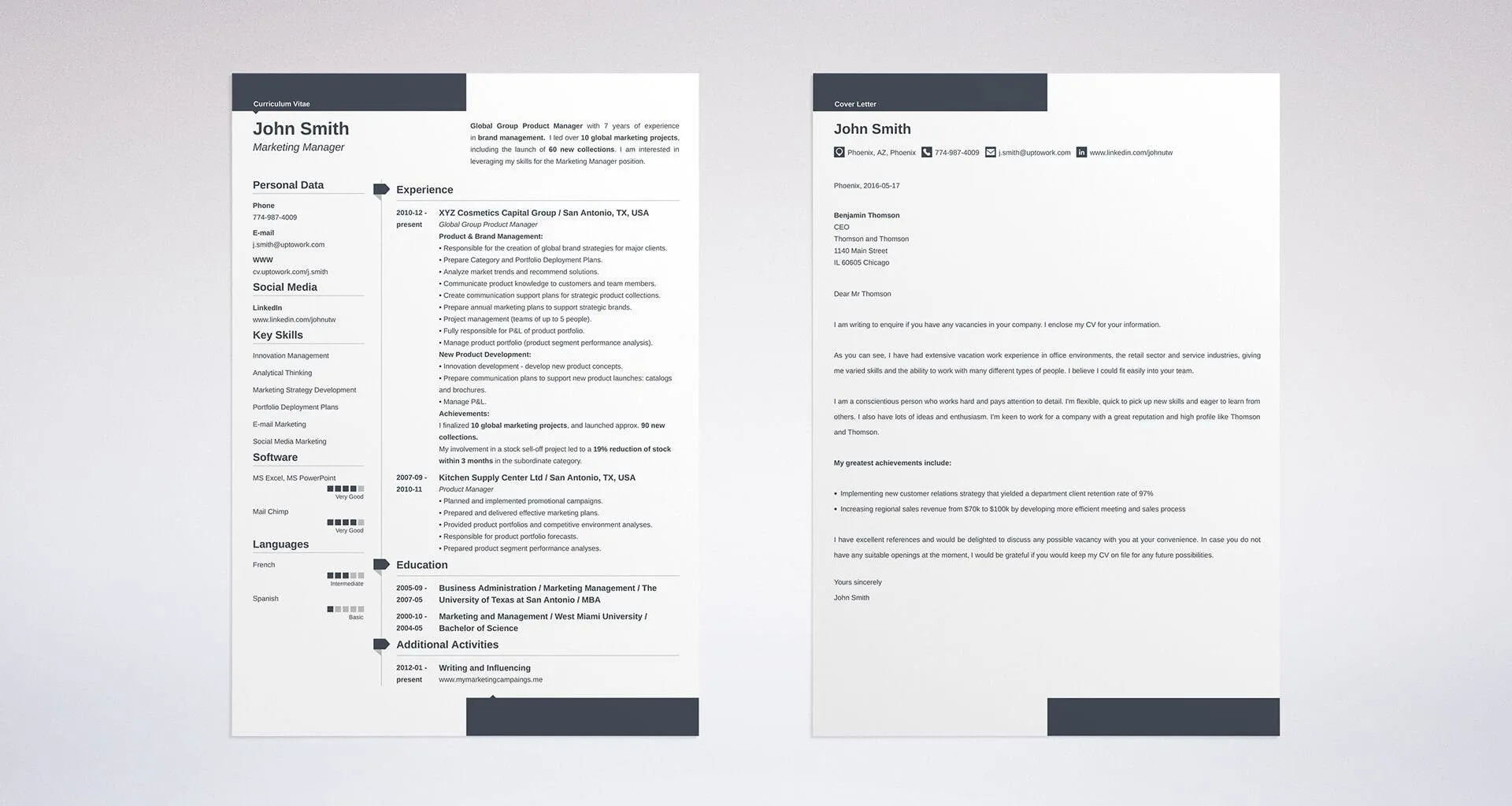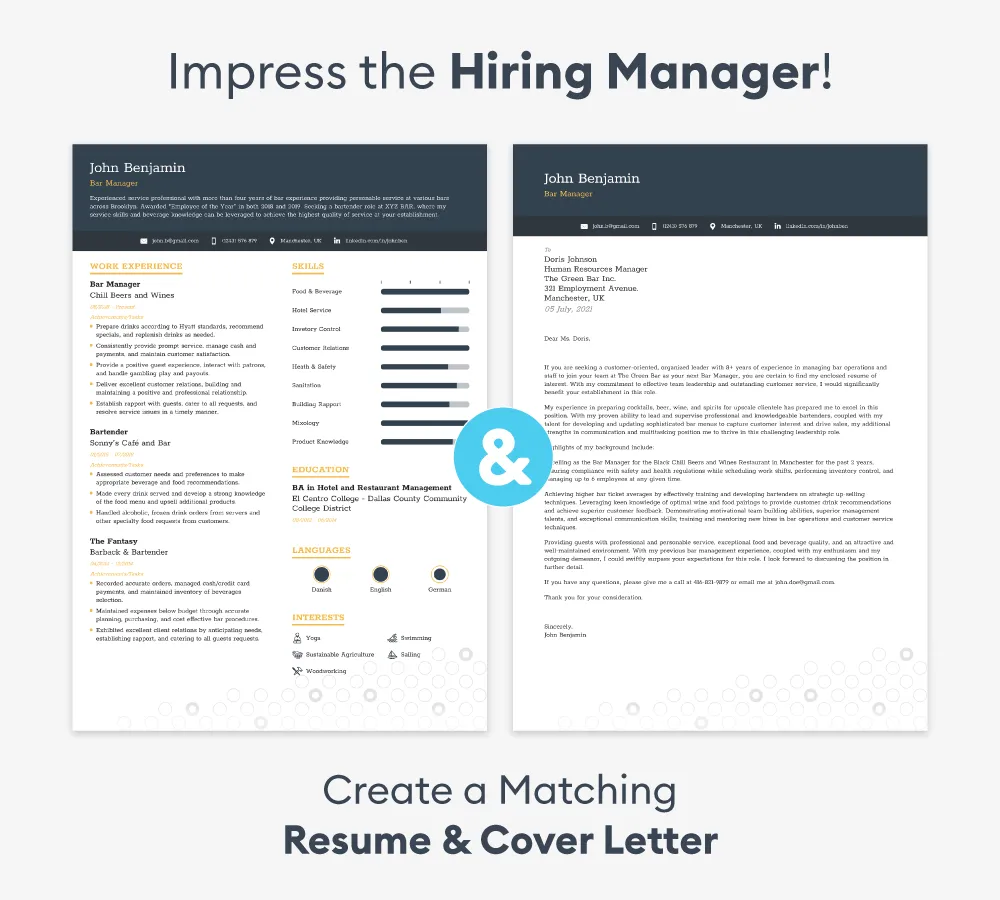What is a Cover Letter and Why Do You Need One
A cover letter is a crucial document accompanying your resume when applying for jobs. Think of it as your personal introduction, a chance to make a strong first impression and showcase your personality, skills, and enthusiasm for the position. While a resume provides a snapshot of your qualifications, a cover letter allows you to elaborate on your experiences, explain why you’re a perfect fit for the role, and demonstrate your understanding of the company and its needs. In a competitive job market, a well-crafted cover letter can be the key that unlocks the door to an interview. It is your opportunity to differentiate yourself from other applicants and highlight what makes you uniquely qualified for the job. Without a cover letter, you risk appearing like a generic applicant who has not taken the time to personalize their application. It’s a missed chance to connect with the hiring manager on a deeper level and to communicate your passion for the opportunity.
The Purpose of a Cover Letter
The primary purpose of a cover letter is to introduce you to a potential employer and express your interest in a specific job. It serves as a concise overview of your qualifications, skills, and experiences, highlighting the most relevant aspects for the position. The cover letter allows you to explain why you are the ideal candidate for the role, emphasizing how your qualifications align with the company’s needs and requirements. It is also an opportunity to showcase your communication skills and writing ability, which are important in most professional settings. Furthermore, a cover letter can be used to address any gaps in your resume or to provide additional context to your application. By strategically using the cover letter, you can demonstrate your enthusiasm for the job and the company, and to convince the hiring manager that you deserve an interview. It is a chance to make a compelling case for why the employer should consider you.
What a Cover Letter Should Include

A compelling cover letter should include several key components to effectively communicate your qualifications and interest. Begin with a professional salutation, addressing the hiring manager by name if possible. The opening paragraph should clearly state the position you’re applying for and how you learned about it. In the body paragraphs, highlight your relevant skills, experiences, and accomplishments, providing specific examples to demonstrate your capabilities. Quantify your achievements whenever possible, using numbers to illustrate your impact. Show your understanding of the company and the role, explaining why you are a good fit. Express your enthusiasm for the opportunity and reiterate your interest in the position. Conclude with a call to action, such as requesting an interview, and express your gratitude for their time and consideration. Proofread the letter carefully to ensure there are no errors in grammar or spelling. Be sure to include contact information, so the employer knows how to reach you.
Formatting Your Cover Letter for Maximum Impact
Proper formatting can significantly enhance the readability and impact of your cover letter. Use a professional and easily readable font, such as Arial, Times New Roman, or Calibri, with a font size between 10 and 12 points. Maintain consistent formatting throughout the document, including margins, spacing, and alignment. Keep the letter concise, aiming for a single page in length. Use clear and concise language, avoiding jargon or overly complex sentences. Break up long paragraphs into shorter ones to make the text easier to read. Use bullet points or lists to highlight key information and accomplishments. Ensure your cover letter has a professional layout with adequate white space to avoid looking cluttered. Properly format your contact information at the top, including your name, phone number, email address, and LinkedIn profile URL. Consider using a professional template to ensure a polished and consistent appearance. When preparing your document for the application, save it as a PDF file to preserve its formatting and ensure it looks the same on any device.
Cover Letter Writing Tips
Crafting a compelling cover letter requires thoughtful consideration and attention to detail. Always tailor your cover letter to the specific job and company. Research the company thoroughly and demonstrate your understanding of their mission, values, and needs. Highlight the skills and experiences that are most relevant to the job description, emphasizing your achievements and quantifying your results whenever possible. Use action verbs to describe your accomplishments and responsibilities. Show, don’t just tell; provide specific examples to illustrate your abilities. Proofread your letter carefully for any grammatical errors, spelling mistakes, or typos. Ask a friend, family member, or career counselor to review your cover letter for feedback. Maintain a professional and positive tone throughout the letter. Avoid clichés or generic statements; personalize your letter to make it stand out. Be enthusiastic and express your genuine interest in the position and the company. Don’t be afraid to showcase your personality and let your passion for the job shine through.
Key Phrases to Include

Using the right phrases can significantly enhance the impact of your cover letter. Start with a strong opening statement that grabs the reader’s attention and clearly states your purpose. Use phrases that highlight your enthusiasm for the position and the company, such as “I am excited about the opportunity to…” or “I am particularly drawn to…” When describing your skills and experiences, use action verbs like “managed,” “developed,” “led,” “implemented,” and “achieved.” Include phrases that demonstrate your understanding of the company’s needs, such as “I understand that…” or “Based on my research…” Quantify your achievements with phrases like “increased sales by 15%” or “reduced costs by $X.” Emphasize your skills and experiences in relation to the job requirements. Use phrases that highlight your ability to work well in a team and collaborate with others. Close with a confident and proactive statement, like “I am eager to discuss how my skills and experiences can benefit your team” or “I look forward to hearing from you soon.”
Showcasing Your Skills and Experience
Effectively showcasing your skills and experience in your cover letter is essential for making a strong impression. Carefully review the job description to identify the key skills and qualifications the employer is seeking. Align your skills and experiences with these requirements, highlighting those that are most relevant to the position. Use specific examples to demonstrate how you have applied these skills in previous roles. Instead of simply listing your skills, provide context by explaining how you utilized them to achieve specific results. Quantify your achievements whenever possible, providing measurable outcomes that demonstrate your impact. Use action verbs to describe your accomplishments and responsibilities. Tailor your examples to the specific industry and role, highlighting experiences that demonstrate your understanding of the business. When describing your experience, focus on the impact you made in your previous positions. Show the employer what you can do for them. Consider using a skills matrix or a brief summary of your key accomplishments to provide a quick overview of your qualifications. Remember, your cover letter is an opportunity to prove your value to the company and show them why they need you on their team.
Cover Letter Mistakes to Avoid
Avoiding common cover letter mistakes can significantly improve your chances of success. One of the biggest mistakes is sending a generic cover letter that is not tailored to the specific job or company. Always customize your letter to each application. Another common mistake is using a passive voice or vague language. Write in a clear and active voice, and provide specific examples to illustrate your skills. Avoid simply repeating information from your resume; use the cover letter to elaborate on your experiences and explain how they align with the job requirements. Don’t use clichés or generic phrases that don’t add any value to your application. Proofread your letter carefully for any grammatical errors, spelling mistakes, or typos; these errors can create a negative impression. Don’t write too much, keep your cover letter concise and to the point, and avoid exceeding one page in length. Avoid including irrelevant information that doesn’t directly relate to the job requirements. Do not include negative comments about your previous employers or colleagues. Finally, make sure your contact information is correct and up-to-date, so the employer can easily reach you.
Common Errors to Watch Out For

Attention to detail is crucial when writing a cover letter, and avoiding common errors can make a significant difference. One of the most common errors is grammatical errors, spelling mistakes, and typos. Always proofread your letter carefully. Another common error is using the wrong name or address for the hiring manager or company. Double-check all contact information before submitting your application. Avoid using a casual or unprofessional tone; keep your letter professional and formal. Don’t include irrelevant information that is not related to the job or company. Refrain from using jargon or technical terms that the hiring manager may not understand. Another common error is a lack of personalization, making the cover letter seem generic. Tailor each letter to the specific job and company. Ensure consistency in formatting, including font, spacing, and margins. Do not exceed the recommended length of one page. Finally, avoid sending a cover letter that does not match the job description or resume, these inconsistencies can create confusion. It’s essential to be meticulous and precise in every aspect of your cover letter, helping you make a strong impression.
Proofreading Your Cover Letter
Proofreading your cover letter is a vital step in ensuring that it makes a positive impression. After completing your draft, take the time to carefully review it for any errors. Start by checking for grammatical errors, spelling mistakes, and typos. Read the letter aloud to catch any awkward phrasing or sentence structures. Pay close attention to punctuation, ensuring that commas, periods, and other marks are correctly placed. Verify that your contact information, including your name, address, phone number, and email address, is accurate and up-to-date. Check the formatting, including font, margins, and spacing, to ensure that it is consistent and professional. It is also a good idea to have someone else proofread your cover letter. A fresh pair of eyes can often catch errors that you may have missed. Ask a friend, family member, or career counselor to review your letter and provide feedback. Before submitting your application, read the cover letter one last time to make sure it is error-free and ready to make a strong impression.
Tailoring Your Cover Letter to the Job
Customizing your cover letter for each job application is essential for demonstrating your genuine interest and qualifications. Begin by carefully reviewing the job description to identify the key requirements and desired skills. Research the company to understand its mission, values, and culture. Then, tailor your cover letter to highlight the skills and experiences that are most relevant to the specific role and company. Use specific examples to demonstrate how your qualifications align with the job requirements. Modify your letter to showcase your understanding of the company and its needs, explaining why you are a good fit. Use keywords and phrases from the job description to demonstrate that you understand the role. Adapt your tone and language to match the company’s culture, showing that you have taken the time to learn more about the organization. By tailoring your cover letter to each job, you can significantly increase your chances of landing an interview.
Adapting Your Letter to Different Industries

Adapting your cover letter to different industries requires a nuanced understanding of each field’s specific requirements and expectations. For technical or scientific roles, emphasize your technical skills, research experience, and any relevant certifications. In creative fields, showcase your portfolio and highlight your artistic talents and innovative thinking. For customer service positions, stress your communication skills, empathy, and ability to resolve issues effectively. In sales-oriented roles, focus on your ability to achieve targets, build relationships, and close deals. In the healthcare industry, demonstrate your compassion, attention to detail, and understanding of medical terminology. Adapt your language and tone to match the industry’s culture and standards. Research the industry-specific terminology and incorporate it into your cover letter. By tailoring your cover letter to each industry’s specific needs, you can demonstrate your understanding of the field and increase your chances of success.
The Importance of a Strong Conclusion
The conclusion of your cover letter is your final opportunity to make a lasting impression on the hiring manager, so it’s essential to make it count. The conclusion should reiterate your interest in the position and summarize why you are a strong fit for the role. Express your enthusiasm and confidence in your ability to contribute to the company’s success. Include a clear call to action, such as requesting an interview or offering to provide further information. Thank the hiring manager for their time and consideration. Keep the conclusion concise and to the point, avoiding any unnecessary information. Proofread your conclusion carefully to ensure that it is free of errors. Avoid using generic or cliché phrases; instead, personalize your closing to make it stand out. A well-crafted conclusion can leave a positive and memorable impression, increasing your chances of securing an interview and ultimately landing the job.
